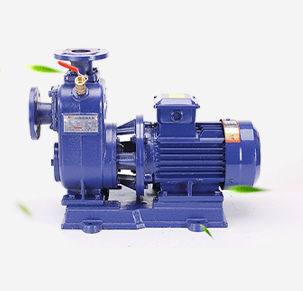Zulu
- Afrikaans
- Albanian
- Amharic
- Arabic
- Armenian
- Azerbaijani
- Basque
- Belarusian
- Bengali
- Bosnian
- Bulgarian
- Catalan
- Cebuano
- Corsican
- Croatian
- Czech
- Danish
- Dutch
- English
- Esperanto
- Estonian
- Finnish
- French
- Frisian
- Galician
- Georgian
- German
- Greek
- Gujarati
- Haitian Creole
- hausa
- hawaiian
- Hebrew
- Hindi
- Miao
- Hungarian
- Icelandic
- igbo
- Indonesian
- irish
- Italian
- Japanese
- Javanese
- Kannada
- kazakh
- Khmer
- Rwandese
- Korean
- Kurdish
- Kyrgyz
- Lao
- Latin
- Latvian
- Lithuanian
- Luxembourgish
- Macedonian
- Malgashi
- Malay
- Malayalam
- Maltese
- Maori
- Marathi
- Mongolian
- Myanmar
- Nepali
- Norwegian
- Norwegian
- Occitan
- Pashto
- Persian
- Polish
- Portuguese
- Punjabi
- Romanian
- Russian
- Samoan
- Scottish Gaelic
- Serbian
- Sesotho
- Shona
- Sindhi
- Sinhala
- Slovak
- Slovenian
- Somali
- Spanish
- Sundanese
- Swahili
- Swedish
- Tagalog
- Tajik
- Tamil
- Tatar
- Telugu
- Thai
- Turkish
- Turkmen
- Ukrainian
- Urdu
- Uighur
- Uzbek
- Vietnamese
- Welsh
- Bantu
- Yiddish
- Yoruba
- Zulu
Telephone: +86 13120555503
Email: frank@cypump.com
Sep . 19, 2024 00:35 Back to list
axial flow pump
Understanding Axial Flow Pumps Principles and Applications
Axial flow pumps are a crucial component in various industrial and municipal applications, serving as efficient mechanisms for moving fluids, predominantly in cases requiring high flow rates with relatively low pressure increases. This article delves into the principles of axial flow pumps, their design features, operational advantages, and some common applications.
Principles of Operation
The operating principle of an axial flow pump revolves around the movement of fluid along the axis of the pump shaft. Unlike centrifugal pumps, which generate pressure through rotational kinetic energy, axial flow pumps create flow by directing the fluid in a linear path. The core components of an axial flow pump include the impeller, diffuser, and volute.
The impeller consists of several blades oriented in such a way that when they rotate, they impart energy to the fluid, pushing it in a direction parallel to the pump shaft. This is followed by the diffuser, which slows down the fluid, converting kinetic energy into pressure. The volute collects the fluid and directs it to the discharge.
Design Features
Axial flow pumps are characterized by their specific design elements that cater to their operational efficiency. The most prominent feature is the impeller's design, often designed with a large diameter and fewer blades compared to centrifugal pumps. This design allows for the achievement of high flow rates while maintaining a relatively low specific speed.
Moreover, axial flow pumps are available in both vertical and horizontal configurations. The vertical pumps are generally used in applications like water supply, irrigation, and treatment plants, while horizontal models find application in various industrial processes.
axial flow pump

Advantages
One of the main advantages of axial flow pumps is their ability to handle large volumes of fluid with minimal energy input. This makes them particularly beneficial in situations where energy efficiency is paramount. Additionally, due to their design, they can operate efficiently in low-pressure conditions, which is ideal for applications such as irrigation and sewage treatment.
Another key benefit is their relatively compact design, allowing for easier installation and integration into existing systems. Because they can be mounted vertically, they can save valuable floor space in facilities where room is at a premium.
Common Applications
Axial flow pumps are extensively used in numerous sectors due to their high flow capacity and efficiency. In the agricultural sector, they are commonly utilized for irrigation and drainage purposes. Municipalities rely on these pumps for water supply and sewage treatment processes.
In industrial settings, they are an integral part of cooling water systems, chemical processes, and fish farms, where large volumes of water need to be circulated effectively. The oil and gas industry also employs axial flow pumps for transporting fluids in various stages of production and processing.
Conclusion
In summary, axial flow pumps represent a vital technology in fluid handling, characterized by their unique design and operational advantages. Their ability to move large quantities of fluid efficiently makes them a preferred choice in diverse applications, ranging from agriculture to municipal water supply and industrial processes. Understanding the principles and functionalities of these pumps can aid industries in selecting the right pump for their specific needs, ultimately enhancing operational efficiency and productivity.
-
Heavy-Duty Mining Sludge Pumps - Wear-Resistant Slurry Handling
NewsAug.02,2025
-
Horizontal Split Case Pump with GPT-4 Turbo | High Efficiency
NewsAug.01,2025
-
ISG Series Pipeline Pump - Chi Yuan Pumps | High Efficiency, Durable Design
NewsAug.01,2025
-
Advanced Flue Gas Desulfurization Pump with GPT-4 Turbo | Durable & Efficient
NewsJul.31,2025
-
ISG Series Vertical Pipeline Pump - Chi Yuan Pumps | Advanced Hydraulic Design&Durable Construction
NewsJul.31,2025
-
ISG Series Vertical Pipeline Pump - Chi Yuan Pumps | Energy Efficient & Low Noise
NewsJul.31,2025










